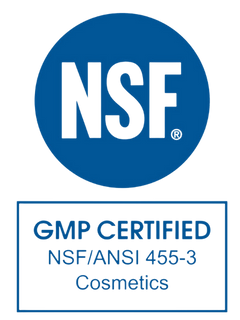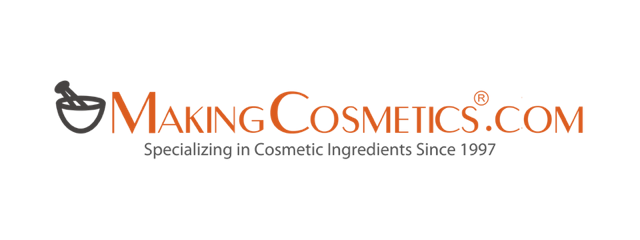Quality Assurance
Even if you never intend to sell your cosmetic products, you should always aim to make products of the highest possible quality. Products of poor quality will make you rapidly lose your joy and interest in handcrafting cosmetics. Assuring consistent quality of your products involves several aspects:
Avoid Purchasing Harsh Cosmetic Ingredients
There are many cosmetic ingredients available on the market which have long been shown to be harsh and irritating to skin. Please check the list below showing skin-irritant ingredients to learn which agents should be avoided based on dermatological testing. Using exclusively mild, natural and tested ingredients is a major advantage of homemade cosmetics.
Avoid Buying Cosmetic Ingredients With Poor Labeling
Never use cosmetic ingredients that are sold with poor or lacking labeling! Typically, vitamins and other active ingredients are sold without any information about their activity (e.g. units per weight) or concentration. Often such ingredients are not pure, are highly diluted and not of cosmetic-grade quality. In addition, ingredients are sometimes sold with only a trade name but no generic name of the substance (e.g. surfactants, emulsifiers). You should never use ingredients without knowing the composition and concentration.
Store Cosmetic Ingredients Properly
Most ingredients have a long shelf-life (months and years) when stored correctly. Whatever type of ingredient, always use a tightly closed container, and avoid moisture and extreme temperatures as these conditions can accelerate spoiling. Certain ingredients (e.g. vitamin C and E) should be stored at light-protected places, while others should be placed in the refrigerator (e.g. shea butter, cocoa butter and vitamin A).
Use Heat-Resistant Containers
Many recipes require the ingredients to be heated up to 150oF (67oC) or more. Therefore, heat-resistant containers like glass or metal jars are recommended to prevent breaking or even melting of the container. If you like to use the microwave to heat things up, you should, of course, use microwave-proof containers.
Avoid Overheating Oils & Other Cosmetic Ingredients
Be careful when heating oils since they are flammable at certain temperatures, spilling can produce severe burns, and when heated too long or at too high temperatures, many ingredients lose their activity and will no longer be effective. In general, active ingredients do not like to be heated and should therefore be added only after the mixture has cooled down.
Avoid Overdosing Cosmetic Ingredients
While commercial cosmetic manufacturers may add active ingredients at too low a concentration, home-based producers overcompensate and tend to use ingredients at too high a concentration. With most ingredients, this does no harm. There are, however, ingredients which can induce skin irritations when added at higher-than-recommended concentrations, including surfactants, fragrances, essential oils and preservatives.
Avoid Extreme Acidity & Alkalinity of Your Products
Extreme acidity and alkalinity can result in poor product performance or even skin irritation. The optimal pH range for cosmetics and personal care products is between 5 to 7. We recommend using a pH indicator (e.g. paper strips) to determine the pH value of your cosmetic product. When a product becomes too acidic (pH too low) or too alkaline (pH too high), you can easily correct the pH value by adding small amounts of soda (sodium carbonate pre-diluted in distilled water) or lemon juice, respectively.
Disinfect Tools & Containers
Avoiding spoiling and growth of bacteria and fungi is important when creating homemade cosmetics. Microorganisms can not only damage your cosmetic product, but also induce skin infections. Therefore, always disinfect all containers you intend to use for making and storing your products. Isopropyl alcohol (rubbing alcohol), 70% alcohol (ethyl alcohol) or any other commercial disinfectant are all acceptable for this purpose.
Use Preservatives
Another measure to prevent bacterial contamination is the use of preservatives. They are natural or synthetic substances that inhibit the growth of microorganisms including bacteria or fungi, or both (see also our special article about preservatives). Natural preservatives are generally less effective than synthetic ones. Synthetic preservatives that are most often used for cosmetic purposes include methylparaben, propylparaben, diazolidinyl urea, phenoxyethanol, DMDM hydantoin, sorbic acid, benzyl alcohol, formaldehyde and triclosan. We recommend benzyl alcohol, potassium sorbate and phenoxyethanol because they have been used successfully for a long time already with extremely few adverse reactions. Thiomersal, quaterniumm-15 and formaldehyde have often been found to cause skin reactions.
Take Precautions When Using Lyes
Lyes used for soapmaking, such as potassium hydroxide and sodium hydroxide, are caustic and can cause chemical burns on contact. Always use goggles and gloves when handling raw flakes, lye solutions and unneutralized soaps. Store these substances away from children in well-sealed, break proof and clearly labeled containers. In case of contact with skin or eyes, rinse for several minutes with water. Lemon juice or vinegar is also effective for instant neutralization of hydroxide on the skin.
Label All Your Products
When your cosmetic product is completed, remember to attach a label that provides information about the type of product, date of production and perhaps also the ingredients used. The date is particularly important to monitor shelf-life. If you consider selling your products, make sure your label isDisclaimer











